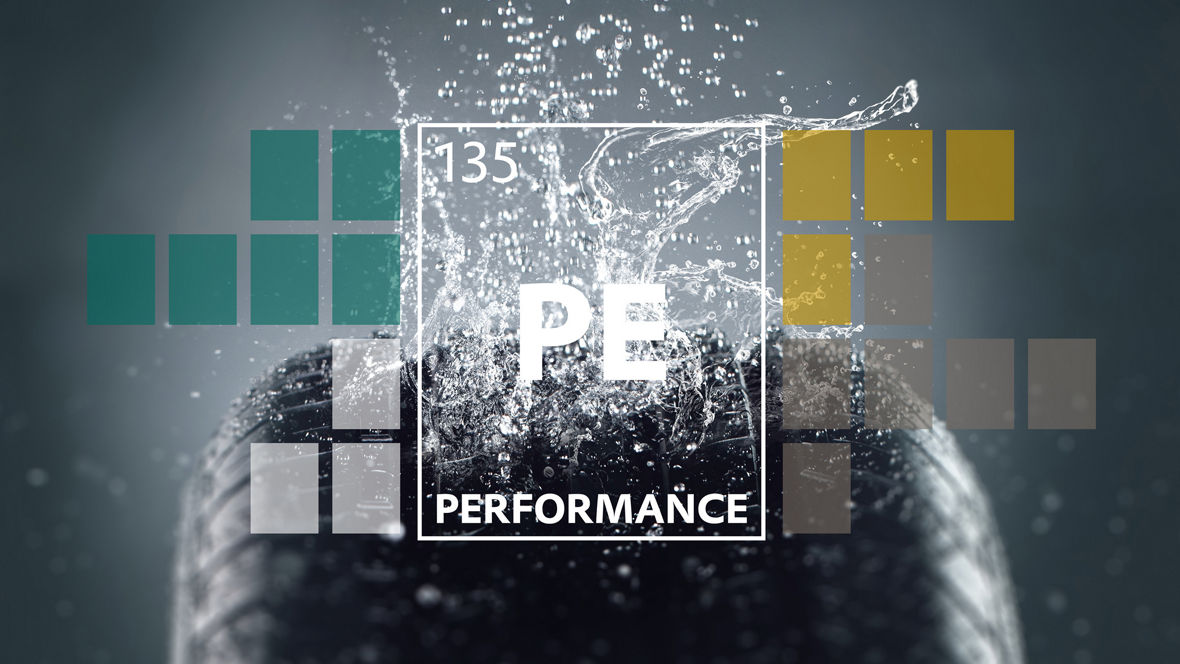Jump directly to your topic of interest

Tire manufacturers bear a major, twofold responsibility: Their products play a crucial role both in ensuring driving safety and in reducing the environmental impact of road traffic. Evonik supports them in these challenges by enabling high performance tires with the proven, highly efficient Silica/Silane reinforcing filler system, experience and expertise for testing these systems in modern rubber mixtures. Additionally, Evonik implements innovative solutions to continuously improve the environmental footprint of the filler system and of the final tire products. Beyond high-quality products, Evonik provides tire manufacturers with comprehensive life cycle assessment (LCA) data and develops silica and silanes based on circular raw materials.

Evonik’s contribution to sustainability along the tire value chain
Excellent tire performance with increased lifetime and long service life
Efficient, sustainable processing of rubber compounds
Local-to-local: reliable and resilient silica supply chain
Experience and expertise in innovative product development,
including broader Evonik competencies
Footprint of silica and silanes contributes to sustainability of tires
Tires for safe and sustainable mobility
The properties and performance of tires can contribute significantly to the global goal of reducing the environmental impact of road traffic, which still accounts for approximately 15% of total CO2 emissions. Lower fuel consumption in combustion vehicles is a key lever for reducing the carbon footprint.
This is where silica and silanes from Evonik come in: Together they form a highly effective filler system which revolutionized tire technology in 1992 by enabling fuel-saving or so-called “Green Tires”. These are characterized by a lower rolling resistance and improved safety factors such as wet grip and shorter braking distance on wet roads, without compromising on the abrasion resistance. Additional Evonik solutions such as liquid POLYVEST® polybutadienes boost the effect of the Silica/Silane System. With POLYVEST® ST, the overall performance of silica-reinforced tire tread compounds used in combination with sulfur silanes can be improved and major reductions in rolling resistance achieved.
As the transition to electromobility progresses, greater mileage ranges are crucial for broad public acceptance of fully electric passenger cars. The components of the tire tread have a major influence on this. Low rolling resistance is a key factor, as it saves fuel in combustion engines and increases the range of electric vehicles.
Both today and tomorrow, Evonik’s silica, silanes and polybutadienes are always at hand to optimize tire tread compounds in line with stricter legal requirements for sustainable tires and to contribute to making mobility more sustainable overall.
ULTRASIL®: proven active filler for tires
Evonik is the world’s leading producer of precipitated silica and inventor of ULTRASIL® rubber silica, a proven and well-established active filler which has been enabling the continuous improvement of tires for more than seven decades. This highly dispersible (HD) silica is characterized by excellent processing properties. It can easily be added to the rubber compound and enables higher filler quantities to be integrated into the tire tread.
The ULTRASIL® product line offers a broad range of reinforcement and processability effects to suit the specific needs of tire industry customers – including low-surface HD silica for winter tires, HD silica for balanced summer and winter tires optimized for rolling resistance, and high-surface HD silica with high reinforcement potential for ultra-high-performance tires.
Evonik’s rubber silanes: chemical coupling of fillers and polymers
Highly dispersible silica provides reliable grip even in wet weather conditions. However, the polar silica is not readily compatible with non-polar polymers – it needs bifunctional organosilanes to couple the silica to the polymer. Adding sulfur functional organosilanes improves reinforcement with silica in non-polar polymer compounds considerably. Bi-functional organosilanes react with the silica surface and the polymer during the mixing and vulcanization process, forming chemical bonds between two otherwise non-reacting materials. Thanks to these permanent chemical connections, silica’s benefit in effectively improving the dynamic properties of rubber can be fully utilized.
Evonik has developed silanes with tailored properties for mechanical rubber goods and tires. The first and still most important of these products, Si 69®, was launched in 1971 and has become a standard silane for tire rubber compounds. An even higher benchmark for tire performance has now been reached with the introduction of Si 363® rubber silane, which contributes to reduced rolling resistance and lower fuel consumption of up to 8% in conventional tires.


Rolling resistance, wet traction and abrasion resistance form the corners of the magic triangle for tire performance, safety and sustainability. The tire’s tread is crucial. It consists of a mixture of rubber polymers, which is optimized by a reinforcing filler. But carbon black, traditionally used as a filler in conventional tires, has its limitations: It does not allow for improvement in any of the three cornerstones of the magic triangle without sacrificing the performance of at least one of the other two.
The implementation of the Silica/Silane System was the game changer, enhancing performance in each category and constantly unlocking even greater potential for improvement. This is why carbon black as a filler has been continuously and largely substituted by silica in combination with silanes in today’s tire tread mixtures.
EV tires with enhanced abrasion resistance
Evonik accompanies and supports the tire industry in the transition from conventional internal combustion engines (ICEs) to electromobility. The versatile portfolio of ULTRASIL® tire silica and matching silane products offers everything the industry needs for high-performance EV tires.
Low rolling resistance extends the range of electric vehicles, which in turn reduces power consumption and improves driving comfort, with fewer stops for charging. Furthermore, there is an even greater focus on the abrasion resistance of tires in EVs. Due to their batteries, electric vehicles are significantly heavier than vehicles with combustion engines. Weight and the recuperation effect during braking exert stronger forces on the tires than in conventional passenger cars. High-surface silica such as ULTRASIL® 9100 GR improve abrasion resistance, extending the lifetime of tires.
Regardless of the type of drive, the Silica/Silane System has the potential to improve compounds for all types of tires, including special tires. Tires with large treads, such as those for SUVs, particularly benefit from Evonik’s active fillers and reinforcing materials.
ULTRASIL® 4000 GR for very high filler levels
ULTRASIL® 4000 GR is the first low surface area (LSA) silica that also offers very good dispersibility. This enables very high filler levels in the tire tread, thus further improving the traction of winter tires in snowy and slushy conditions, compared to tires using conventional silica.
Silica and silanes from one reliable supplier worldwide
Evonik is the world’s only supplier offering both silica and silanes. The broad portfolio comprises a large selection of conventional and highly dispersible silica for rubber as reinforcing fillers, as well as silanes with tailored properties. Silica is manufactured at the company’s own production sites in America, Asia and Europe. For silanes, Evonik is the only Europe-based producer of standard silanes such as Si 69®, an important grade for the tire industry. Tire manufacturers can count on supply security for silica and silanes plus technical support around the world.



